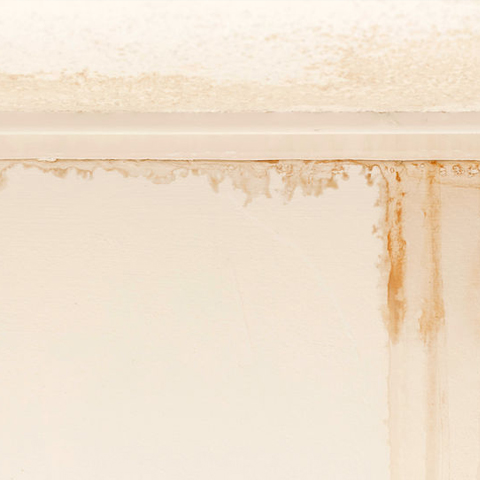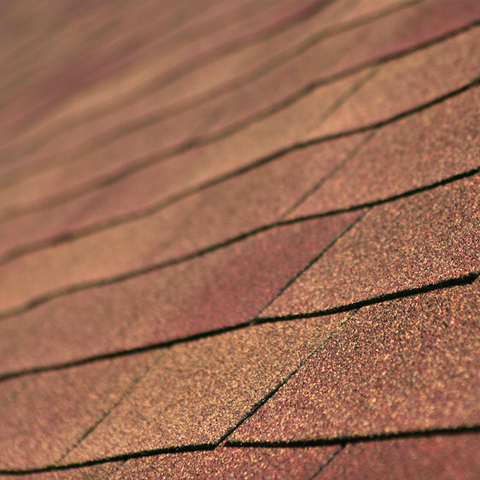
Emergency roofing services
If you’ve ever needed it, you probably found out quickly that emergency roof repair services rarely happen right then, at the very moment. With that in mind, every homeowner would benefit by having an emergency roof repair kit on hand so you can do a temporary emergency roof repair yourself until professional help arrives!
Because professional 24-hour emergency roof repair isn’t immediately at your beck and call, knowing how to do emergency roof repair DIY could be the difference between salvaging things and losing everything.
Is a leaking roof an emergency?
No matter when a roof leak happens, it is a problem, but during a rainstorm, it quickly turns into an emergency. Which is when a roof leak will usually appear, unfortunately, which is why roofing contractors are their busiest, and why having the knowledge and supplies to do a temporary emergency roof repair yourself.
How do you temporarily fix a leaky roof?
By the time you a leak in your house, the drywall is probably saturated and if it isn’t addressed quickly, the ceiling and wall could start crumbling. First things first, call an emergency roofing service, as we discussed earlier, they probably won’t be “right there, ”, so getting your call in first gets that wheel turning.
The next thing you need to is to stop the dripping with an emergency repair. Not sure how to do that? Follow the following steps and you’ll have a temporary patch until a professional roofing contractor arrives.
Emergency Roof Patch
- Start this emergency roof repair by climbing up in the attic and remove the insulation from the wet area of the ceiling drywall and dry up any water puddled or standing. Place a piece of plywood over the joists and sit a bucket on it. This will catch any water that still comes through the hole. Do not place the bucket directly on the ceiling drywall because as it fills up with water, the weight may push it all the way through to the room below.
- Look for where the leak is, usually, you can follow the water running or trickling along the rafters or you may notice it on the underside of the decking.
- Using a sheet of plywood and roofing tar, you’ll make a temporary patch. Using a trowel, smear the roofing tar on the underside of the decking over the leak and then smooth it with a putty knife. Fit the plywood on to the tar and trowel roofing tar on the edges of the plywood patch.
- Measure from the leak to the gable and from the leak to the ridge. After the rain has stopped, go up on the roof, wearing rubber-soled shoes, and measure those same dimensions. Using roofing tar, spread on the underside of the shingles to fortify them and stop the leak.
What If You Don’t Have Attic Access?
- If you don’t have access to the attic, an emergency roof repair can be done by starting with the construction of a plastic roof cover with a four-foot roll of six-mil polyethylene plastic.
- Unroll it plastic without unfolding it and measure the amount it takes to cover the roof section from eave to ridge plus four additional feet, then using a utility knife to cut the plastic. Now open one-fold and create an eight-foot strip.
- Taking 2x4x8 and taking one end of the plastic wrap around the 2×4 and staple it. Nail another 2x4x8 to the first so that the plastic is sandwiched between them.
- Take this up to the roof and position the wood at the eaves, stretching the plastic over the guessed are of the leak and over the ridge, stapling the plastic’s other end to a third 2x4x8 and create another sandwich with plastic between a fourth 2x4x8. Place 2 boards measuring 2x4x3 so they hang over the ridge on the opposite side.
Can a leaking roof collapse?
Yes, if a roof has aged and not been repaired or replaced, it can be in danger of collapsing, especially if it has gotten wet. Signs to watch for possible collapsing:
- Walls have cracks
- Cracked or sagging ceiling
- Leaks from the ceiling inside the house
- Roof creaks and pops
- Doors & windows won’t open
- Doors open alone
- Sagging roof
- Bent or rippled roof supports
- Bent and/or missing framing screws
- Deformed roof structure
- Exterior masonry cracks
Does a leaky roof cause mold?
Yes, and not just one type of mold, but two: Limited or Systemic.
Limited growth mold happens when ventilation is enough in the attic so that moisture can exhaust. The mold stays in the leak area. Systemic growth happens when moisture can build up because the roof leak is large or long term. The mold will grow through the entire attic.

Is a leaking roof covered by insurance?
This varies from policy to policy, but in case of natural disaster, yes, homeowner’s insurance will cover emergency roof repair or replacement in most cases. If the adjuster determines it causes the leak because of owner neglect, such as not having the roof cleaned and inspected, not making repairs as needed. As a prepared and responsible homeowner, having an emergency roof repair kit and supplies on hand is just as important as changing the air filter, draining the water heater, and other small tasks. Small tasks that can keep small problems from turning into a major catastrophe. If you have a leaking roof in Louisville and Chattanooga, TN, Burell Built Roofing, LLC can help! Call us today at 865-238-2628!